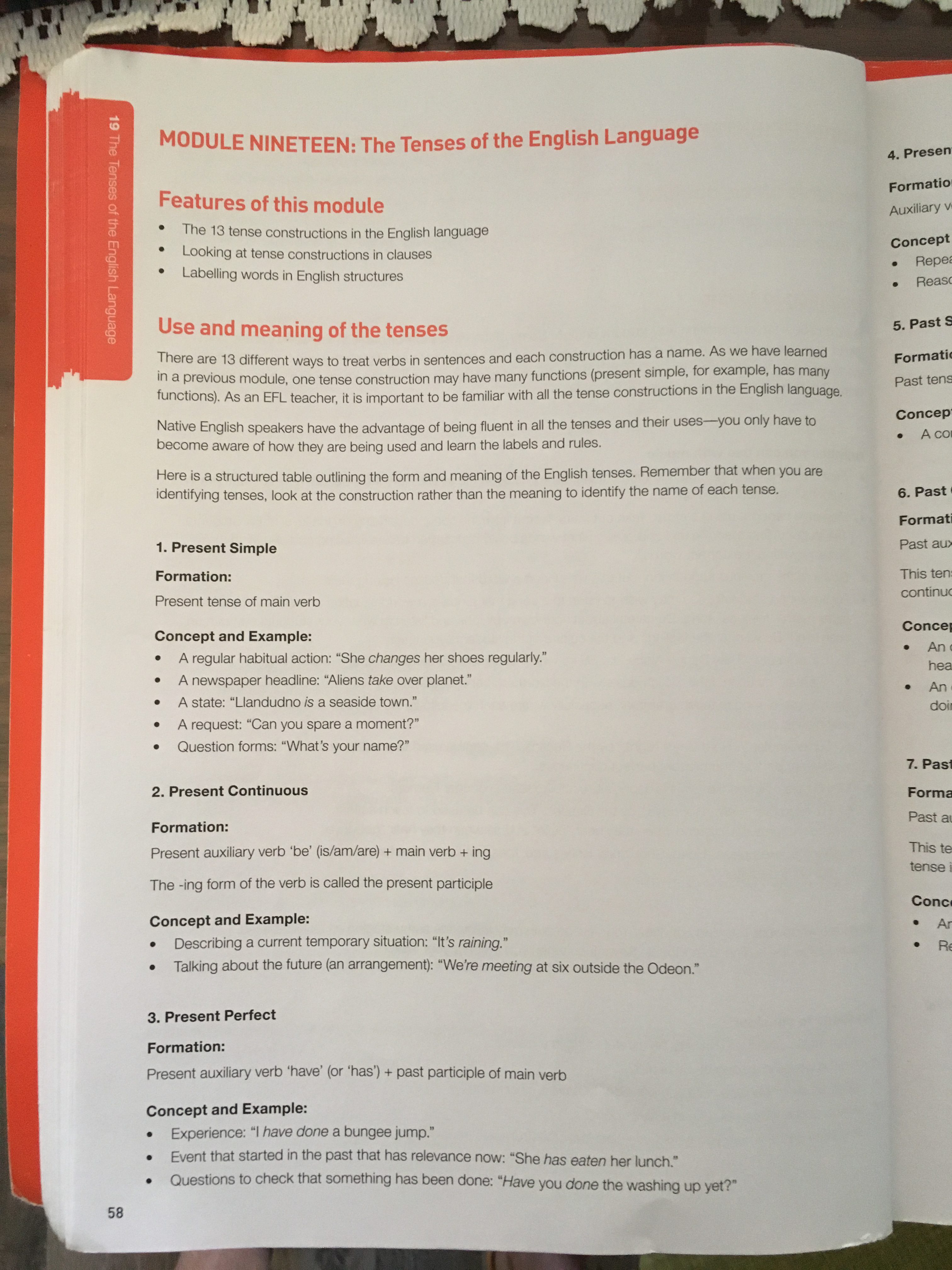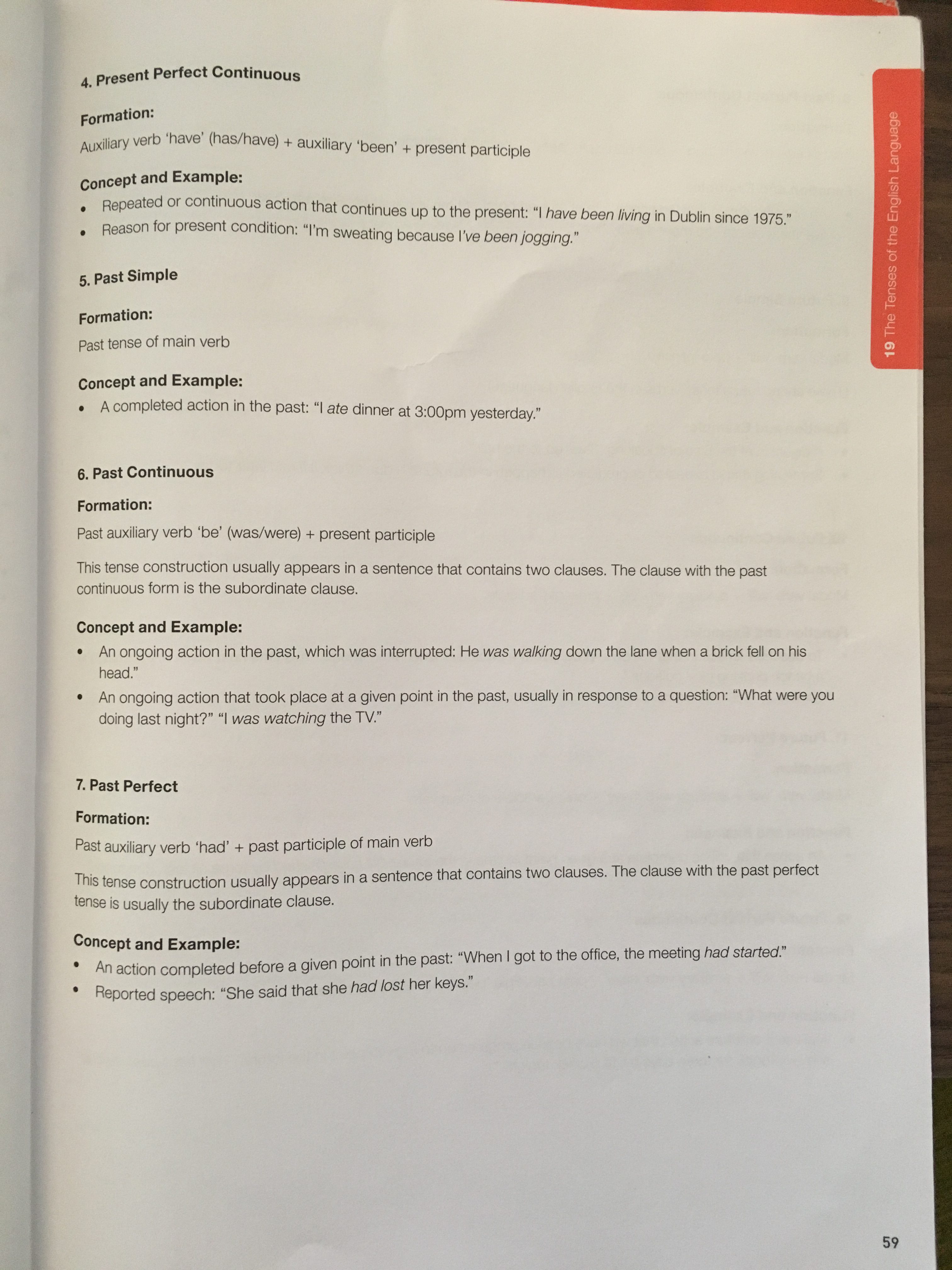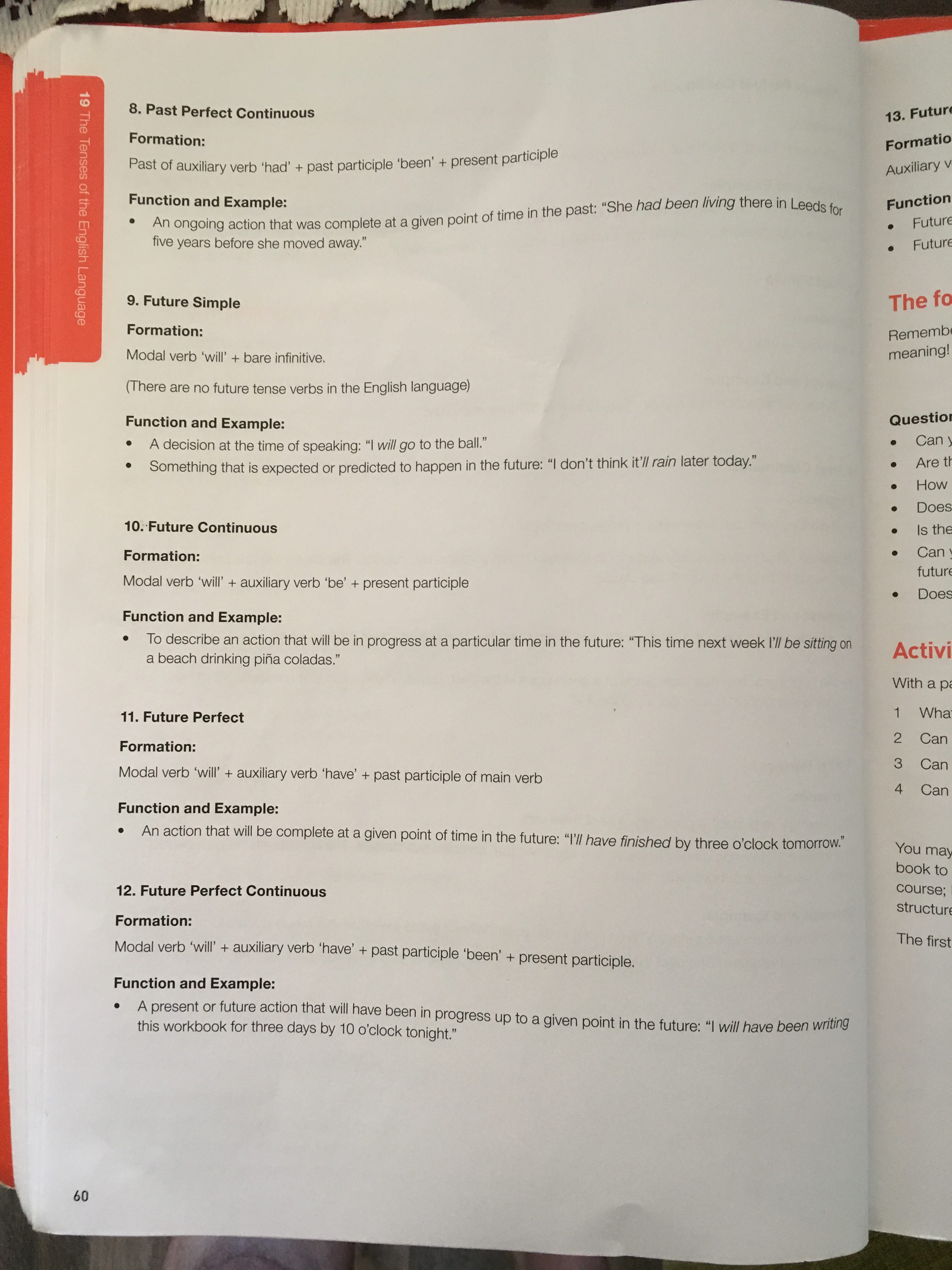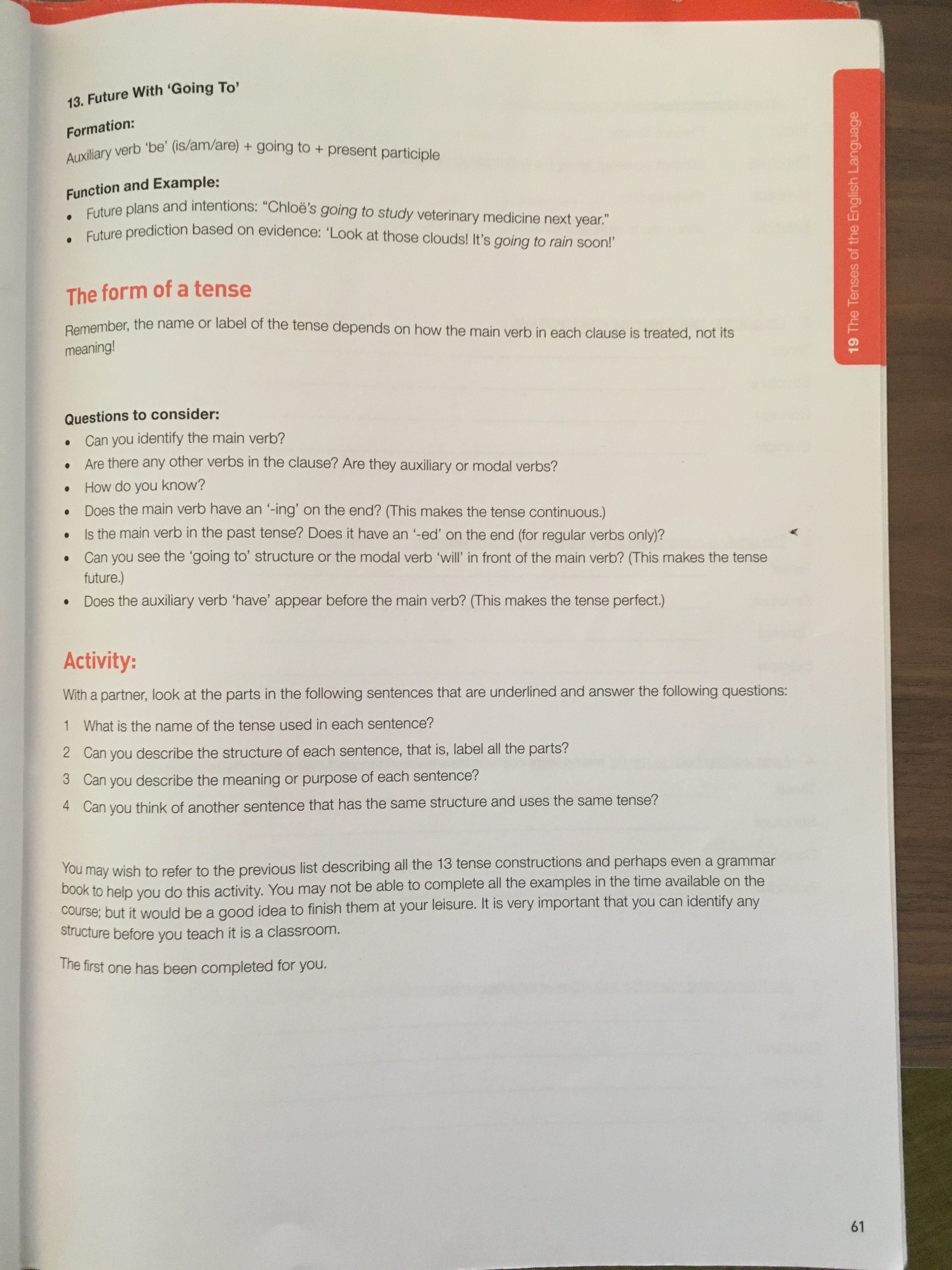
So I did this course around May 2011 and mostly to have a backup plan for my move to Poland. I was doing my regular vairagya / voluntary simplicity / clearing up and came across this lovely book. Screenshots below are for personal use as tenses are very confusing. The course was great and we were given so many resources. The course mates I’ve kept in touch with seem to be on their lovely journey. I usually have a journal entry on my blog or private files but cannot find the TEFL adventure to link it.
TEFL PlaylistTable of Contents
Introduction to the Weekend TEFL Course
Module One: Teaching Language Structures to Our Students
Introductions and warmers
Getting to know one another
Interactive practice activities
Practising structures
Module Two: Eliciting the Target Language
How a teacher elicits
Understanding the importance of using a target language
Module Three: Arranging Your Class
The fundamentals of classroom management
Keeping your students moving
Module Four: Introduction to Grammar Terminology
A quick introduction to grammar terminology
Running board activities
Matching activities
Module Five: A Foreign Language Lesson
The experience of learning a new language
Eliciting techniques
Modelling the target language
Module Six: Using Classroom Props
Pictures
Flash cards
Realia (objects)
Module Seven: Using Body Language to Teach
Mime
Gestures
Facial expressions
Module Eight: Using the Board
Writing structures and vocabulary
Drawing pictures
Showing meaning
Module Nine: The Meanings and Functions of Language
Learning English through functions and meaning
Using different registers
Module Ten: Class Levels
Understanding the different levels of students
How to determine a student’s level
Looking at students’ contrasting abilities in writing and speaking
Module Eleven: Teaching Structure and Meaning
Teaching the meaning of structures
Asking concept questions
Time lines
The importance of natural pronunciation
Highlighting the form of structures
Amazon #ads

Module Twelve: Practice Activities
How to plan and prepare practice activities in a lesson
Controlled practice v. free practice
Information gap activities
Module Thirteen: Planning a Lesson
Writing a grammar-based lesson plan
The PPP method
Module Fourteen: Teaching Practice #1
Preparing a lesson
Teaching a lesson
Receiving feedback from your peers and your tutor
Module Fifteen: Qualities of an EFL Teacher
What makes a good teacher?
How to use role-play in the classroom
Module Sixteen: The Sounds of English
Pronunciation
Stress
Intonation
Accent
Module Seventeen: Teaching the Four Skills
Receptive skills
Productive skills
Module Eighteen: Using Music to Teach English
The pros and cons of using music
Music activities
Module Nineteen: The Tenses of the English Language
The thirteen tense constructions in the English language
Looking at tense constructions in clauses
Labelling words in English structures
Module Twenty: Correcting Students’ Errors
Positive strategies of error correction
Correcting oral and written errors
Module Twenty-One: English Examinations
English exams commonly used around the world
Module Twenty-Two: Teaching Practice #2
Final teaching practice
Grammar-based lessons
Skills-based lessons
Controlled and free practice
Module Twenty-Three: Finding Work
Working in the UK and abroad
Applying for a TEFL position
Useful publications
Useful addresses
Books and websites







